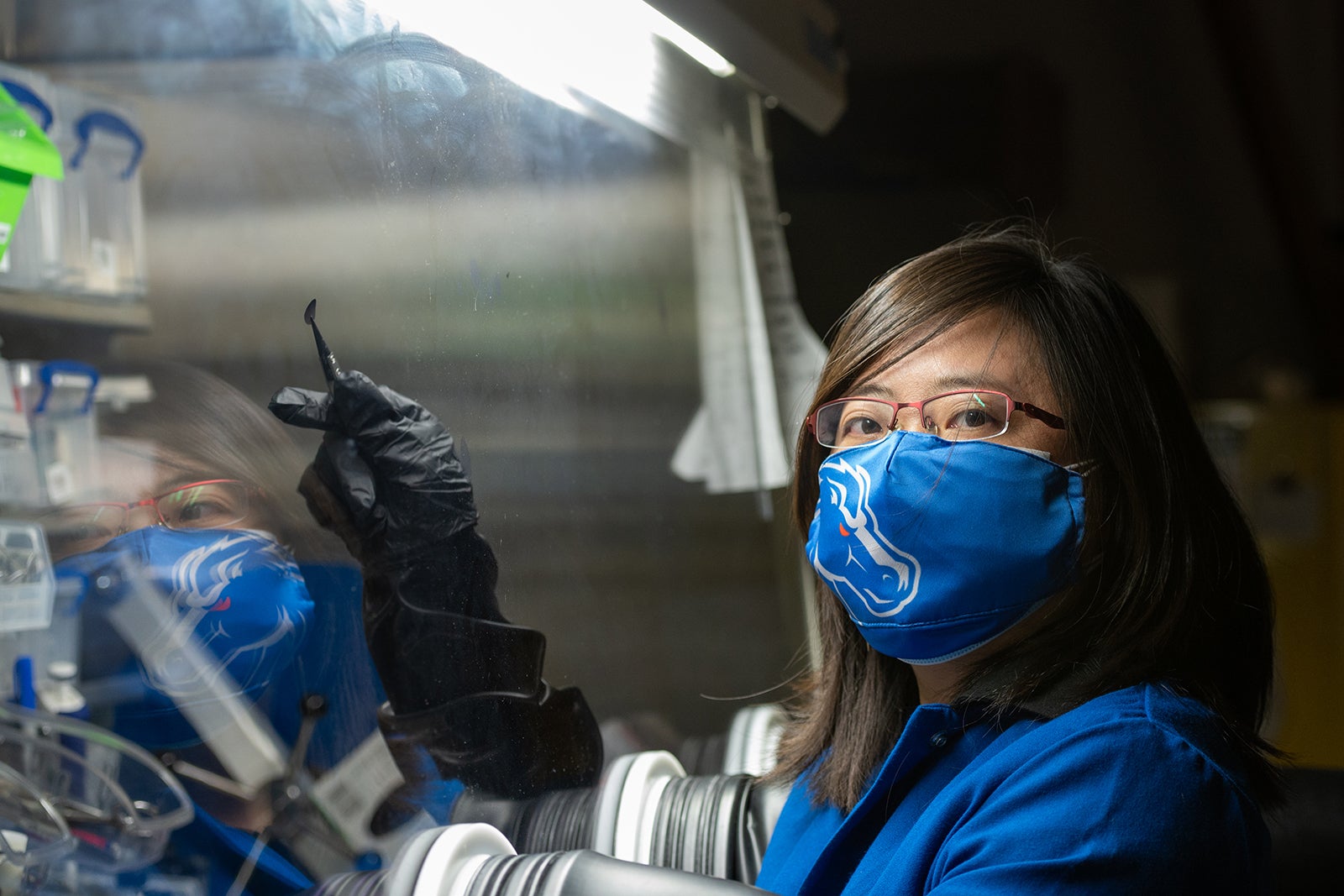
Researchers Publish Work on New Material Discovery for Lithium-ion Battery
As fossil fuels continue to be impractical for future energy applications due to cost, conflict and the global climate crisis, Lithium ion (Li+) batteries are a technology attracting enormous attention from research and development across the world. However, lithium ion batteries do have limitations. The urgent need for a stronger, longer-lasting, and more stable battery is central to the push for all-electric vehicles and other energy markets.
“Lithium ion batteries are the market leader for sustainable energy storage technologies, but innovative battery materials through novel processing methods are in urgent need to meet surging demand for high performance batteries,” said Hui (Claire) Xiong, an associate professor in the Micron School of Materials Science and Engineering.
One of the grand challenges in lithium ion batteries is the anode material for fast charging applications. The current commercial anode material is based on graphite, which has decent capacity but is susceptible to Li metal plating and electrolyte decomposition that cause safety hazard, especially at fast charging conditions, due to its low operation potential.
However, thanks to research conducted by Boise State University materials scientists and engineers and collaborators from the University of California San Diego, Lithium ion batteries just got a big boost. The team used a non-traditional method to synthesize a novel cubic rock salt electrode, and published their finding in the prestigious journal Nature Materials.
Through this innovative method, called electrochemically-induced amorphous-to-crystalline transformation, the team discovered that by cycling a nanostructured amorphous niobium oxide with lithium ions, the material can self adapt and form a new crystalline structure. This is important because not all crystals have the same properties for batteries, and using this different method to make the crystalline structure shows optimal performance in the niobium oxide electrode. The synthesis of this new rock salt electrode exhibits exceptional electrochemical properties including high lithium-ion storage, faster diffusion, and high cycling stability.
For Xiong, this research is exciting because it challenges current methods with an innovative approach.
“The most exciting part is to just think outside the box,” Xiong said. “Usually if we want to make our structures we try to follow the conventional way, like solution-based or solid-state synthesis. But this is a new way for us to make materials. We can use electrochemical cycling itself to train our structure that best adapts to the system and shows better properties.”
Co-author and alum Pete Barnes completed both his bachelors in chemistry (‘14) and his doctorate in materials science and engineering (‘21) at Boise State university, and hails from Jerome. Since graduating, Barnes works as a postdoctoral fellow at Idaho National laboratory. When asked if he ever expected to publish research in such a prestigious journal as a student, he candidly replies, “No, I’m not sure that publishing in a Nature publishing group magazine ever crossed my mind when joining Boise State. In hindsight, I should have definitely thought it possible with the support that Boise State provides its researchers.”
Xiong is an affiliated faculty with the Center for Advanced Energy Studies and a CAES fellow. The team involves 13 Boise State researchers from diverse backgrounds including professors from materials science and physics, research scientists from materials science and geoscience, and doctoral students and undergraduate student from materials science.
The work is jointly led by the group of Professor Shyue Ping Ong at University of California – San Diego. The team also collaborated with Drs. Sungsik Lee, Justin Connell, Hua Zhou, and Yuzi Liu from Argonne National Laboratory and Drs. Yingge Du and Zihua Zhu from the Pacific Northwest National Laboratory.